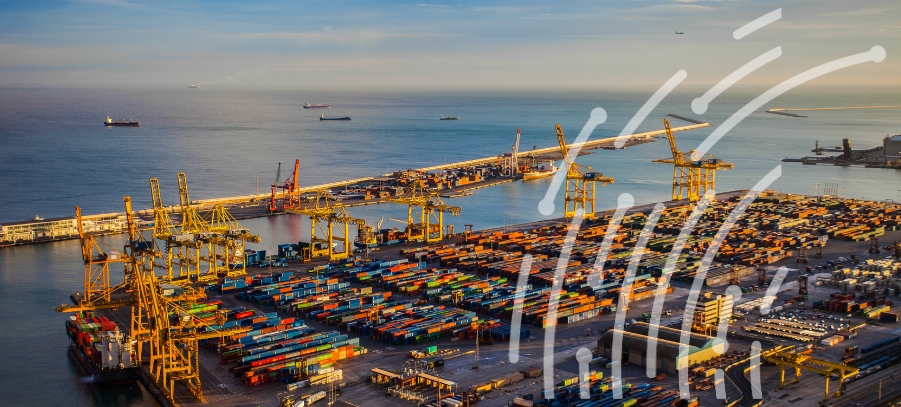The collapse of Stenn and Kimura serves as a stark warning against poor risk management in the trade finance industry. These recent events have highlighted the need for stronger defenses at various stages of the trade finance process, including the importance of concerted action from investors and the utilization of trade credit insurance to mitigate risks. As the industry reflects on the lessons learned from these collapses one month into 2025, there are critical takeaways that can guide future practices and decision-making.
The collapse of Stenn, a London-based non-bank trade finance provider, and the subsequent closure of Kimura’s trade finance wing have sent shockwaves through the industry. These events, along with the 2021 collapse of Greensill, underscore the vulnerabilities and risks inherent in trade finance. While each of these cases had unique circumstances leading to their downfall, they all shed light on the darker side of the trade finance market, where fraud, collusion, and financial crime risks continue to pose significant threats.
The collapse of Stenn, in particular, has raised questions about how such suspicious activities were allowed to persist unchecked for so long. The lax oversight surrounding non-bank lenders, coupled with the complexity of supply chain finance, creates an environment ripe for fraudulent practices to thrive. The shared responsibility for oversight among investors, insurers, and regulators can sometimes result in gaps that allow fraud and malpractice to go undetected until it is too late.
Trade finance remains a risky market for new entrants, as evidenced by the recent collapses of non-bank lenders like Stenn and Kimura. The lack of expertise in trade finance within some investment funds and the industry at large can leave gaps that enable fraud and accounting malpractice to go unnoticed, ultimately leading to losses or insolvency. The importance of effective risk management and oversight cannot be overstated in an industry as vulnerable as trade finance.
The collapse of Stenn, once valued at over £700 million and known for its innovative approach to providing financing to SMEs globally, serves as a cautionary tale of how quickly fortunes can change in the trade finance industry. The company’s rapid rise and subsequent fall following allegations of fraud and illicit activities involving its CEO highlight the need for thorough due diligence and monitoring of all parties involved in trade finance transactions.
In the wake of these collapses, the industry must reevaluate its practices and procedures to ensure greater transparency, accountability, and risk management. Strengthening defenses against financial crime risks, such as fraud and collusion, will be crucial in restoring confidence in the trade finance market. Concerted action from investors, insurers, and regulators to enhance oversight and due diligence processes can help prevent similar collapses in the future.
As the trade finance industry navigates the challenges and uncertainties of 2025, the lessons learned from the collapses of Stenn, Kimura, and Greensill must serve as a wake-up call to prioritize risk management and compliance efforts. By learning from these cautionary tales and implementing robust safeguards, the industry can strive to build a more resilient and secure trade finance ecosystem for the future. An investigation conducted by Bloomberg has shed light on the fraudulent activities that led to the insolvency of Stenn, a prominent trade finance company. HSBC’s concerns about the identity of some of Stenn’s major clients were reportedly justified, as some of the company’s largest revenue sources turned out to be questionable. Sources revealed that a significant portion of Stenn’s income came from a few large clients in Japan and Taiwan, known as the “legacy book,” whose accounts were managed exclusively by the company’s top executives. However, after going into administration, some of these supposed clients denied any relationship with Stenn, casting doubt on the legitimacy of up to £32 million from unknown sources.
Further investigation revealed that not only were the invoice owners potentially bogus, but the companies purportedly supplying these invoices were also questionable. Several larger companies whose invoices Stenn claimed to handle denied ever having acquired goods or services from these suppliers, suggesting misrepresentations or fronts. Despite denials of wrongdoing by Stenn’s CEO, Sergey Karpovsky, and COO, Andrey Gurdzhibek, the situation raised serious concerns about the company’s practices.
The unraveling of Stenn’s fraudulent activities was triggered by HSBC stumbling upon US indictments that marginally linked Stenn and its CEO to alleged Russian-backed schemes. However, warning signs were present long before, as Karpovsky’s involvement in previous insolvencies and fraud lawsuits with other companies like Eurokommerz and Silverbird Global raised red flags. Furthermore, Stenn’s auditing firm, EY, resigned in 2018 due to concerns about transactions and management explanations, indicating systemic issues within the company.
The collapse of Kimura, another London-based commodity financier, shortly after Stenn’s insolvency raised questions about the stability and integrity of the trade finance industry. Kimura’s decision to wind down its trade finance operations and focus on other sectors highlighted the challenges and risks faced by non-bank lenders in the industry. Some speculated that Kimura’s move was a strategic realignment in response to increasing awareness of fraud risks and the complex infrastructure required to manage them effectively.
The industry’s high pressure for returns and quick turnovers can lead to businesses like Kimura facing insolvency, especially when dealing with inherent risks in trade finance operations. While some insolvencies are expected in such a diverse industry, individual cases like Stenn and Kimura provide insights into the risks faced by non-bank lenders and the broader implications of their closures on the market.
The collapse of both Stenn and Kimura within days of each other underscores the vulnerability of the trade finance industry, particularly in non-bank lending. Comparisons to previous breakdowns like Greensill’s reveal the challenges and pain points unique to the trade finance community. The incidents serve as a reminder of the critical need for proper risk management tools and due diligence to prevent similar events in the future. As we embark on a new year, the trade finance industry is presented with an opportunity to address its core issues, enhance awareness of the risks inherent in many of its operations, and adapt its practices accordingly. While some trade finance firms have achieved significant success by leveraging technology to reach underserved markets like SMEs, the industry as a whole remains susceptible to risks that can threaten the financial stability of non-bank lenders.
One of the key challenges facing the trade finance industry is the inherent risk associated with its operations. Recent events, such as the collapse of Greensill Capital, have highlighted the dangers of taking on excessive debt and engaging in aggressive lending practices. The demise of Greensill Capital underscored the importance of maintaining a robust capital structure to withstand financial shocks, as well as the need for transparency in reporting and accounting practices.
Another significant risk facing the trade finance industry is fraud. The complex nature of moving money and goods across borders, coupled with the use of paper documentation that is easily falsified, creates opportunities for fraudsters to exploit the system for illicit gains. Organizations operating in the trade finance space must remain vigilant in detecting and preventing fraudulent activities, as the impact of fraud can be devastating for investors and lenders alike.
Investors play a critical role in safeguarding the integrity of the trade finance industry. By demanding transparency and conducting thorough due diligence on the organizations they invest in, investors can help identify potential risks and hold companies accountable for their actions. Transparency is essential for investors to ensure that their portfolios are healthy and free from fraudulent activities.
Trade credit insurance can also serve as a crucial safety net for the trade finance industry. By underwriting the underlying trades managed by non-bank lenders, trade credit insurance helps mitigate risks and detect potential fraud. Insurers have become more stringent in their underwriting practices to prevent insolvencies and protect investors from losses.
In conclusion, the trade finance industry must address its core issues, including inherent risks and fraud, to ensure its long-term sustainability. By enhancing transparency, conducting thorough due diligence, and leveraging trade credit insurance, organizations in the trade finance space can protect themselves and their investors from potential threats. It is essential for all stakeholders in the industry to work together to build a more resilient and secure trade finance ecosystem. Trade credit insurers play a critical role in the financial industry by conducting thorough assessments of the financial and legal stability of trade finance institutions. Through their evaluations, these insurers can identify underlying issues that may have previously gone unnoticed. When an underwriter decides not to provide coverage for a specific trade or trade finance company, it serves as a red flag signaling potential problems to the policyholder. While trade credit insurance is not mandatory by law, investors often require it for initial interactions with non-bank lenders, emphasizing its importance in the industry.
Non-bank lenders are essential for facilitating global trade, especially for small and medium-sized enterprises (SMEs) and emerging markets that struggle to access credit from traditional sources. The recent closures of companies like Stenn and Kimura may temporarily impact the industry’s growth, with Stenn facing public breakdown and fraud accusations that could affect the availability and cost of trade credit insurance for some firms. Trade credit insurers are likely to become more selective in their underwriting process, leading to more rigorous checks and stricter criteria for companies seeking coverage.
Despite these challenges, technological advancements and a growing recognition of the role of smaller institutions in bridging the trade finance gap are creating opportunities for new firms in invoice and supply chain finance. Companies operating in the business-to-business space are expanding into lending, leveraging collateral to support transactions. Innovations such as electronic bills of lading (eBLs) are gaining acceptance for their ability to reduce document-based fraud and enhance security in trade finance transactions. Additionally, artificial intelligence (AI) and real-time monitoring tools can improve due diligence capabilities, further strengthening the industry’s risk management practices.
However, fraud and volatility remain significant obstacles to the growth of the trade finance sector. The cases of Stenn and Kimura underscore the need for enhanced financial and compliance oversight in an industry susceptible to fraud. While these incidents are impactful, they represent a small fraction of the overall trade finance market, which handles trillions of dollars in accounts receivable globally. It is crucial for industry stakeholders to collaborate and implement measures to enhance market integrity and transparency, ensuring the sustainability of global trade operations.
In conclusion, trade credit insurers play a vital role in safeguarding the stability and integrity of the trade finance industry. By conducting rigorous assessments and providing valuable insights to policyholders, these insurers help mitigate risks and maintain trust in the market. Despite challenges such as fraud and volatility, ongoing technological advancements and industry collaborations offer opportunities for growth and innovation in trade finance. It is imperative for industry participants to work together to address key issues, uphold standards of excellence, and promote a secure and transparent trade finance ecosystem for the benefit of global commerce.




